Guinea pigs are adorable little grazers with a big appetite for fresh food. While hay and vegetables form the foundation of their diet, many owners wonder - can guinea pigs eat fruit? The answer is yes, but only in moderation.
Fruits can be a healthy, vitamin-rich treat, but some are high in sugar and should be given sparingly. In this guide, we’ll explore the best fruits guinea pigs can safely eat, how often to feed them, and which ones to avoid.
Can Guinea Pigs Eat Fruit?
Yes — guinea pigs can eat fruit, but only as an occasional treat. Their digestive systems are sensitive and naturally designed for fibre-rich foods like hay and leafy greens. Fruits are much higher in sugar, so too much can lead to obesity, digestive upset, or dental problems.
How much fruit can guinea pigs eat?
Offer fruit no more than 2–3 times a week, in small portions (around one teaspoon per serving).
The Benefits of Feeding Fruit to Guinea Pigs
In moderation, fruit can be a great way to add variety and nutrition to your guinea pig’s diet. The main benefits include:
- Vitamin C Boost – Guinea pigs can’t produce their own vitamin C, so fruit helps prevent scurvy.
- Hydration – Fruits have high water content, helping keep guinea pigs hydrated.
- Natural Enrichment – Sweet flavours and textures make treat time fun and mentally stimulating.
- Added Variety – Mixing different fruits helps keep meals interesting and encourages natural foraging behaviour.
Fruits That Guinea Pigs Can Safely Eat
Here’s a breakdown of the best fruits for guinea pigs, how much to feed, and their key nutritional benefits.
Apples (Without Seeds)
Guinea pigs can safely eat apples — and they’ll love them! Apple skin is packed with fibre, which supports healthy digestion, while the fruit itself is rich in vitamin C. Just make sure to remove the seeds and core, as they can be toxic to guinea pigs.
Serving tip: Offer a small, thin slice once or twice a week as a crunchy treat.
Strawberries
Sweet, juicy, and full of vitamin C, strawberries are a guinea pig favourite. They’re also rich in antioxidants that help support overall health. However, because strawberries contain natural sugars, they should be fed in moderation.
Serving tip: Half of a medium strawberry per guinea pig is the perfect portion.
Watermelon
Refreshing, hydrating, and perfect for summer, watermelon is another fruit guinea pigs can safely enjoy. It’s mostly water, making it a great way to keep them hydrated — just be careful with the sugar content.
Serving tip: Give a small cube or thin slice, ensuring there are no seeds or rind.
Bananas
Bananas are safe for guinea pigs to eat. They are soft, easy to chew, and rich in potassium — making them a comforting, energy-boosting snack. But since they’re one of the highest-sugar fruits, moderation is key.
Serving tip: Offer a thin slice every 1–2 weeks as an occasional sweet treat.
Pears
Juicy and mild in flavour, pears make a delightful treat that many guinea pigs enjoy. They provide hydration and fibre, but like most fruits, they should be fed sparingly due to sugar levels. Always remove the seeds before serving.
Serving tip: A small cube or thin slice once a week is enough.
Cherries (Pitted)
Cherries are rich in antioxidants and vitamins, making them a fun, colourful addition to your guinea pig’s treat list. Always remove the pit, as it’s toxic to guinea pigs.
Serving tip: Offer one small cherry — or half if it’s large — once a week.
Other Fruits in Moderation:
- Blueberries – Great source of antioxidants, 1–2 per serving.
- Kiwi – Excellent vitamin C content, feed a thin slice.
Fruits to Avoid Feeding Guinea Pigs
Some fruits are best avoided due to toxicity or excessive sugar content. Do not feed:
- Lemon or lime – Too acidic and can irritate the mouth.
- Peach or plum pits – Contain cyanide compounds.
- Apple seeds – Toxic if consumed in large amounts.
- Dried fruits – Too concentrated in sugar and sticky for teeth.
How to Feed Fruit Safely
· Wash thoroughly to remove pesticides or chemicals.
· Cut into bite-sized pieces for easy chewing.
· Remove seeds, pits, and skins (where necessary).
· Serve fresh, never canned or dried.
· Always provide unlimited hay and water alongside fruit treats.
Remember: Fruit is a treat, not a staple. Hay should always make up 80–90% of your guinea pig’s daily diet.
Final Thoughts
Fruits can make a wonderful, nutritious addition to your guinea pig’s diet when fed responsibly. They offer essential vitamin C, hydration, and a bit of variety — but moderation is key.
Stick to fresh, natural fruits and introduce new ones gradually to avoid upsetting their stomach. Combined with hay, vegetables, and fresh water, these fruity treats will help keep your guinea pig healthy and happy!
FAQs
Can guinea pigs eat fruit every day?
No. Fruit should be an occasional treat — 2 to 3 times per week at most.
What is the healthiest fruit for guinea pigs?
Strawberries, kiwis, and apples (without seeds) are among the best options for vitamin C and balanced sugar content.
Can guinea pigs eat banana peels?
Yes, in small amounts and only if washed thoroughly. Some guinea pigs enjoy them; others don’t.
Can guinea pigs eat dried fruit?
No. Dried fruits are high in sugar and can cause digestive problems or obesity.
How do I introduce fruit to my guinea pig’s diet?
Start with small portions, one fruit at a time, and watch for changes in digestion or stool.

